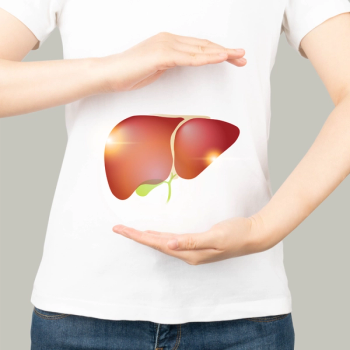
Opdivo-Yervoy Combo Induces Survival Benefit in Advanced Skin Cancer
Compared with Yervoy alone, the use of Yervoy plus Opdivo was associated with a significant survival benefit as a second-line treatment in patients with previously treated advanced melanoma, a type of skin cancer.
Treatment with Opdivo (nivolumab) plus Yervoy (ipilimumab) was associated with a significant improvement in survival when compared with Yervoy alone in patients with stage 3 unresectable or stage 4 melanoma, a type of skin cancer, according to recent study results.
The findings — which were presented at the 2022 American Association for Cancer Research (AACR) Annual Meeting — are from the phase 2 SWOG S1616 trial, which was investigating both regimens as a second-line treatment option.
The optimal use of immunotherapy, the investigators noted, is not well defined in melanoma. Available frontline options, such as the combination of Opdivo and Yervoy, may be too toxic for all patients, and although PD-1 inhibitors like Opdivo induce high response rates, patients ultimately develop resistance.
As such, the SWOG S1616 trial was designed to understand whether treatment with a CTLA-4 inhibitor (Yervoy) alone or in combination with continued PD-1 inhibition (Opdivo) could reverse primary resistance to PD-1/PD-L1 inhibition in metastatic melanoma.
Enrolled patients had unresectable stage 3 or stage 4 melanoma and had disease progression on prior PD-1/PD-L1 inhibition. Moreover, a patient’s disease must have either partially or completely responded to treatment prior to their progression.
In this trial, a pretreatment biopsy was performed, and patients were then randomized to receive either Yervoy monotherapy (24 patients) or Yervoy followed by Opdivo (70 patients).
Tumor assessments were conducted in patients every 12 weeks for a year. Treatment that was associated with clinical benefit was continued and patients were followed for two years.
The main goal of the study was to investigate the median progression-free survival (time from first treatment to disease progression or death from any cause) for both patient groups.
The investigators also wanted to evaluate the objective response rate (percentage of patients whose disease completely or partially responds to treatment), overall survival (time from treatment to death of any cause) and side effect profile of those who received both regimens.
Between July 2017, and July 2020, 91 eligible patients were treated across 35 sites in the United States.
A total of 23 patients received Yervoy alone and 68 received the combination.
At a median follow-up of 28.3 months, treatment with Yervoy and Opdivo induced a median progression-free survival of three months compared with 2.7 months in those who received only Yervoy. The estimated six-month progression-free survival rates were 34% and 13%, in the monotherapy and combination therapy groups, respectively.
The findings also demonstrated that the objective response rate was 9% for those who received the monotherapy compared with 28% in the group that was treated with the combination.
The median duration of response was not yet reached in the group that received only Yervoy, whereas it was 18.9 months in those treated with the combination. Moreover, treatment response was ongoing in 9% of patients administered Yervoy and 12% of patients receiving the combination.
At a median follow-up of 27.3 months, patients in the combination group achieved a median overall survival of 21.7 months compared with 25.7 months with Yervoy monotherapy. The 12-month overall survival rates were 63% and 57%, respectively. These findings, however, were not considered statistically significant.
“Subgroups that appear to have done particularly well with the combination therapy include patients with stage 4 disease, patients with no prior adjuvant therapy, and patients who received less than six months of anti–PD-1 therapy prior to enrollment,” lead study author Dr. Ari VanderWalde, a member of the research faculty at West Cancer Center & Research Institute in Memphis, Tennessee, said in the presentation.
Side effects of any severity were reported in 87% of those receiving Yervoy and 93% of patients being treated with the combination. Mild-to-severe side effects were reported in 74% of patients in the Yervoy group and 85% of those being administered the Opdivo and Yervoy combination.
Severe or life-threatening side effects that occurred in at least 5% of patients in the Yervoy and/or combination groups, respectively, included diarrhea (13% each), rash (4% versus 6%), fatigue (4% versus 6%), anemia (0% versus 6%), hypotension (0% versus 6%) and hyponatremia (4% versus 6%).
“(Opdivo) plus (Yervoy) is an appropriate next-line treatment in patients without response to anti–PD-1 alone,” VanderWalde concluded.
This article was originally published on OncLive as, “Second-Line Nivolumab Plus Ipilimumab Improves PFS in Advanced Melanoma.”
For more news on cancer updates, research and education, don’t forget to




